My Astrophotography Journey
Capturing the cosmos one frame at a time
Embarking on my astrophotography journey has been a cosmic odyssey of wonder, patience, and discovery. It all began with a profound fascination for the night sky, an insatiable curiosity to capture the beauty that lies beyond our earthly realm, and a desire to share the universe's hidden treasures with the world.
From my very first photograph of a star-studded night to the present day, my journey has been a voyage of continuous learning and growth. Each moment spent under the celestial canopy has brought me closer to the stars, the planets, and the galaxies that grace our heavens.
The pursuit of astrophotography is not merely an artistic endeavor; it's a humbling experience that constantly reminds me of our place in the grand tapestry of the universe. The long, cold nights spent peering through the lens have taught me the value of patience, perseverance, and the quiet appreciation of the cosmos. It's in those silent hours that I've come to understand that the universe, with its countless galaxies, nebulae, and stars, holds infinite stories waiting to be told.
Through my lens, I've captured the fiery glow of distant suns, the ethereal dance of the auroras, the serene beauty of lunar landscapes, and the enigmatic depths of deep-space wonders. Each photograph is a testament to the boundless beauty that surrounds us, even when obscured by the city lights or hidden behind the veil of the atmosphere.
My astrophotography journey has also been a path of sharing and connection. Every image I capture is not just for personal fulfillment but also for the purpose of sparking curiosity and igniting a sense of wonder in others. It's a reminder that we are all explorers, gazing upwards with the same sense of awe and contemplation that has inspired astronomers and dreamers for centuries.
As I continue on this incredible journey, I look forward to sharing the cosmos with you, bringing the distant stars a little closer, and nurturing the spirit of curiosity and exploration that resides within all of us. Through my astrophotography, I aim to inspire and connect, reminding us all that we are part of something vast, mysterious, and truly extraordinary.
Join me in this celestial adventure, and together, let's explore the cosmos one image at a time.
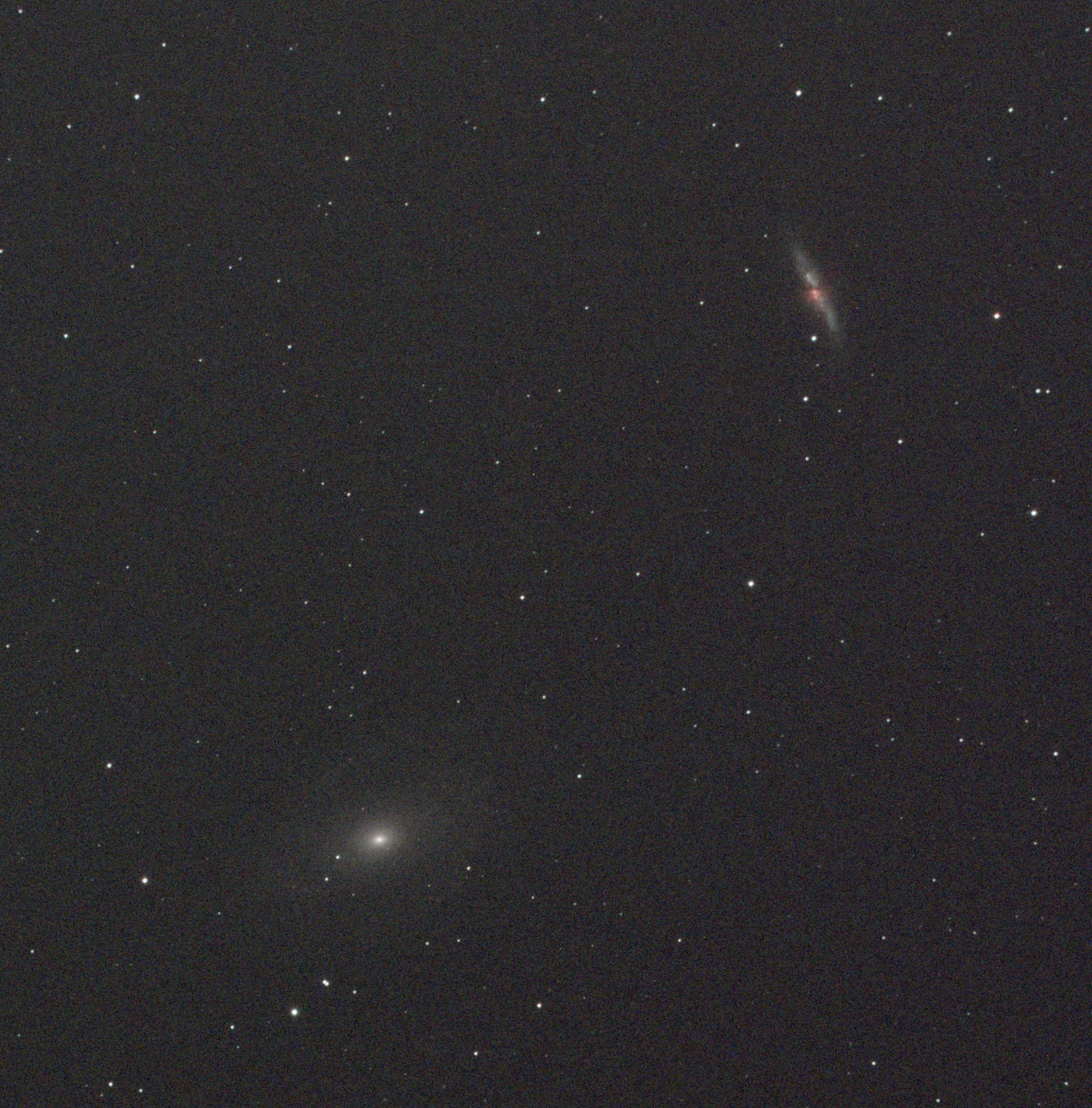
My first attempt at capturing a distant galaxy
I started getting into astrophotography after years of a profound interest in the cosmos. It all started after seeing an ad for a telescope. That telescope sparked my interest. From that day on, I started to research more into telescopes. This led me to coming across the Celestron NexStar 5se. A motorized telescope that was capable of tracking celestial objects. A seemingly perfect beginner level telescope.
After countless hours working and selling some of my stuff, I was able to come up with the money to buy this telescope. I found a guy off of Facebook Marketplace, and after some negotiations, we agreed on $400. So, my dad and I drove an hour to go get this telescope. Upon returning home, I was ecstatic and used it that very same night.
"First light" is what astronomers call the first time you use a new telescope. I still remember pointing my small 70mm refractor at the moon and being amazed at the detail I could see - the craters, mountains, and seas that were invisible to my naked eye.
Soon, I was sketching what I observed and tracking Jupiter's moons. But I wanted to capture and share these sights with others, which led me to attempt astrophotography.
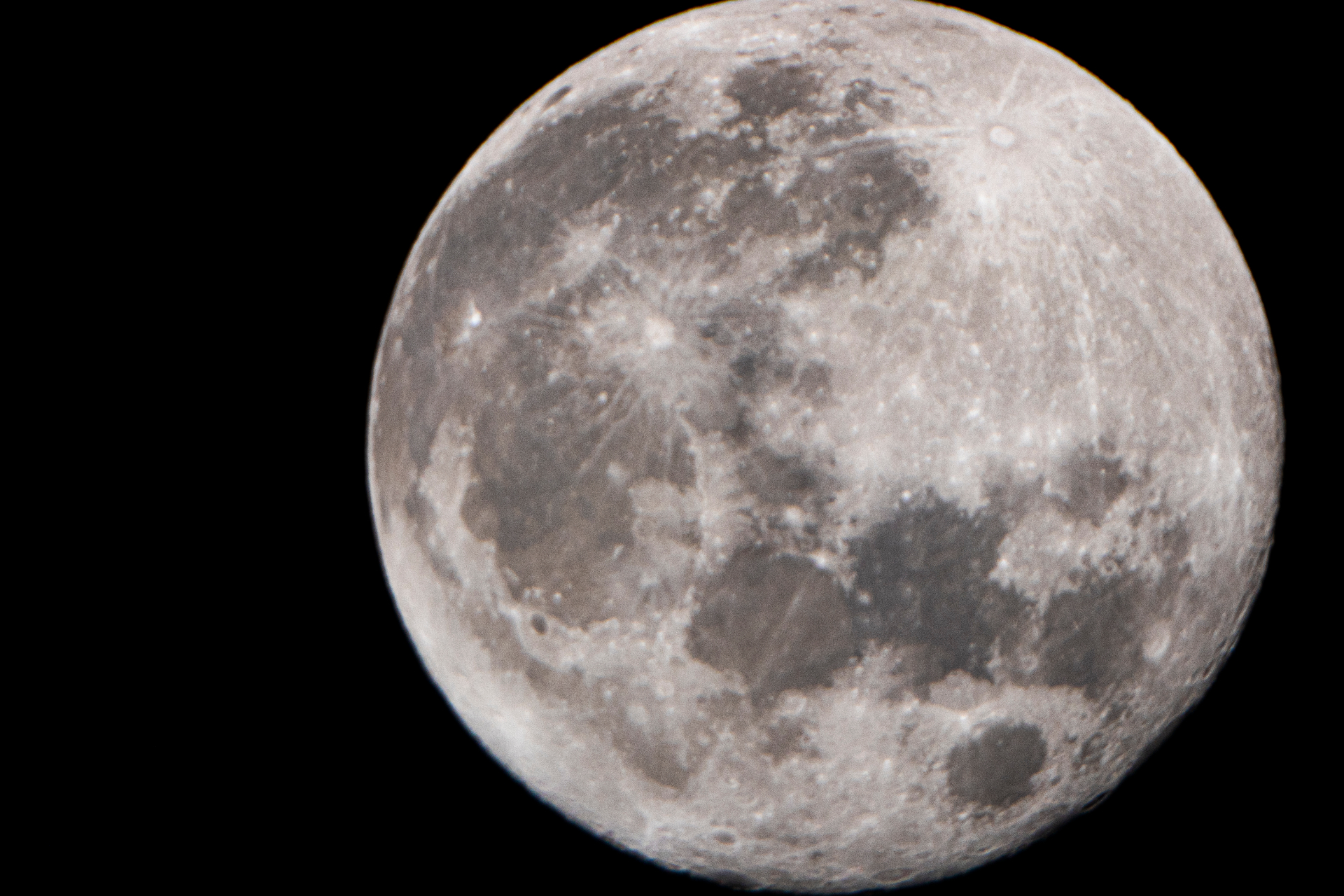
My first lunar photograph
Along that year, I took it out at every opportunity, even witnessing some solar events such as a Blood Moon and meteor shower. After using it for about a year, I decided to purchase a Canon Rebel T7i DSLR camera to attach to my telescope. I wanted to start astrophotography, and so I did. Starting off by taking images of the moon and the Orion Nebula.
This new fascination and hobby quickly built up. So much so that only after using it for six months, I started researching into a higher powered, amateur leveled astrophotography equipment. I worked that entire summer and sold my computer along with my current telescope and camera to come up with enough money to buy this telescope.
After six months of researching, I found the parts that I needed to compose this technical symphony. I bought the main telescope from a guy in California, the motorized mount from a seller two hours away, and the dedicated astronomy camera brand new from the dealer. This whole setup set me back around $3000. Although it hurt to spend, I was excited for what was to come.
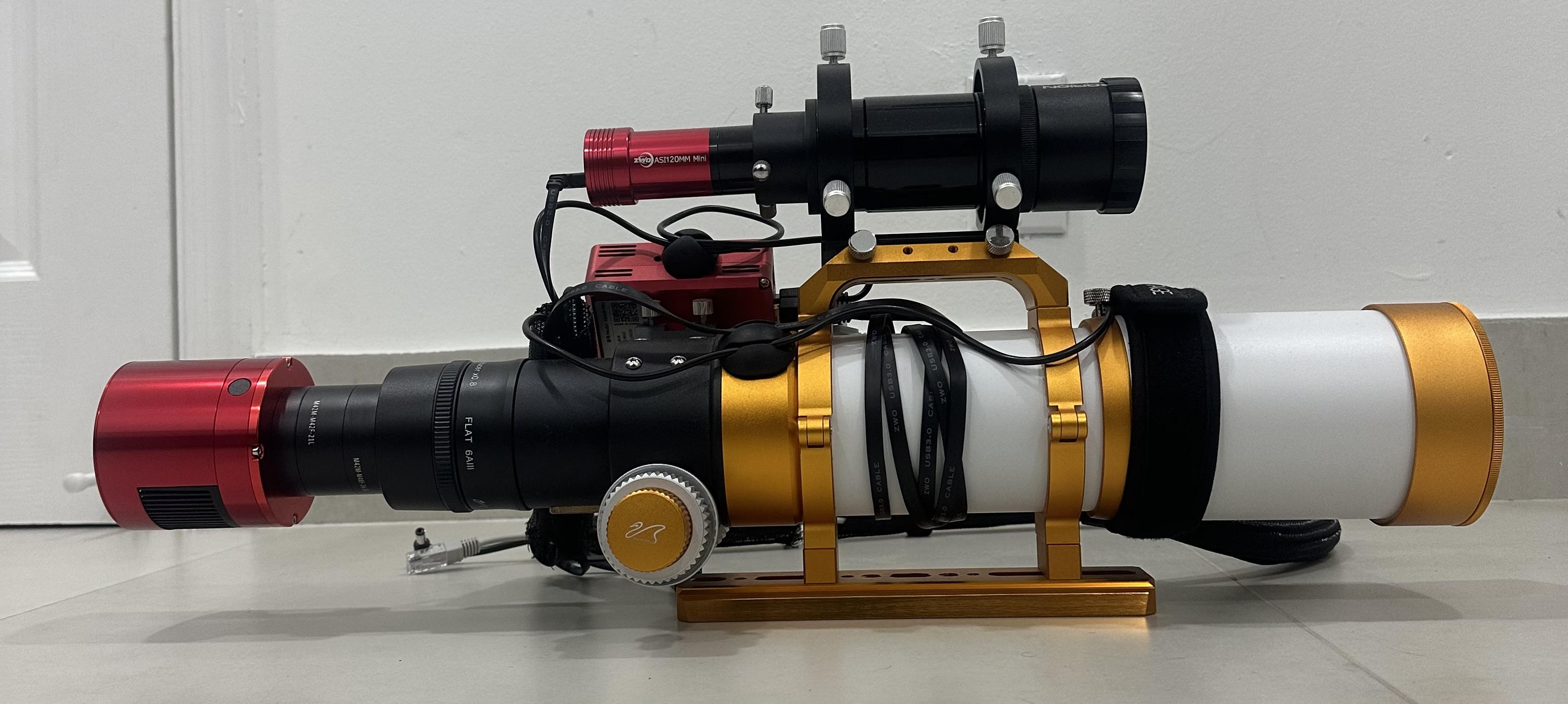
My complete astrophotography refractor rig
Astrophotography combines artistry with technical precision. I spent countless nights perfecting my technique, learning from failures, and celebrating successes. Online forums and local astronomy clubs became invaluable resources.
Each image requires planning - researching celestial objects, checking weather conditions, finding dark locations, and setting up equipment. The process taught me patience and persistence.
After receiving all of my parts in the mail, I began to assemble everything to make sure all of the parts worked. Luckily for me, that night was clear and I was able to actually take out the setup and test everything, and possibly even get my first image. I set up the mount, telescope, camera, and accessories as soon as the sun set, out in my driveway.
After about three hours of painstaking trial and error, I finally got my first image. With this, I was able to consistently get multiple images of 30 second exposures. So, After imaging for an hour, I packed up everything and went back inside to try and edit my first ever image.
Uploading my images to my computer, I used a software called Pixinsight. This is an astrophotography software used to edit images. All of the professionals use it. I spent about three more hours on it, while on the phone with one of my friends who is extremely skillful in this software. He helped me for a while, and also helped me create a workflow. This turned out to be extremely successful. So much so that I finally got my first image.
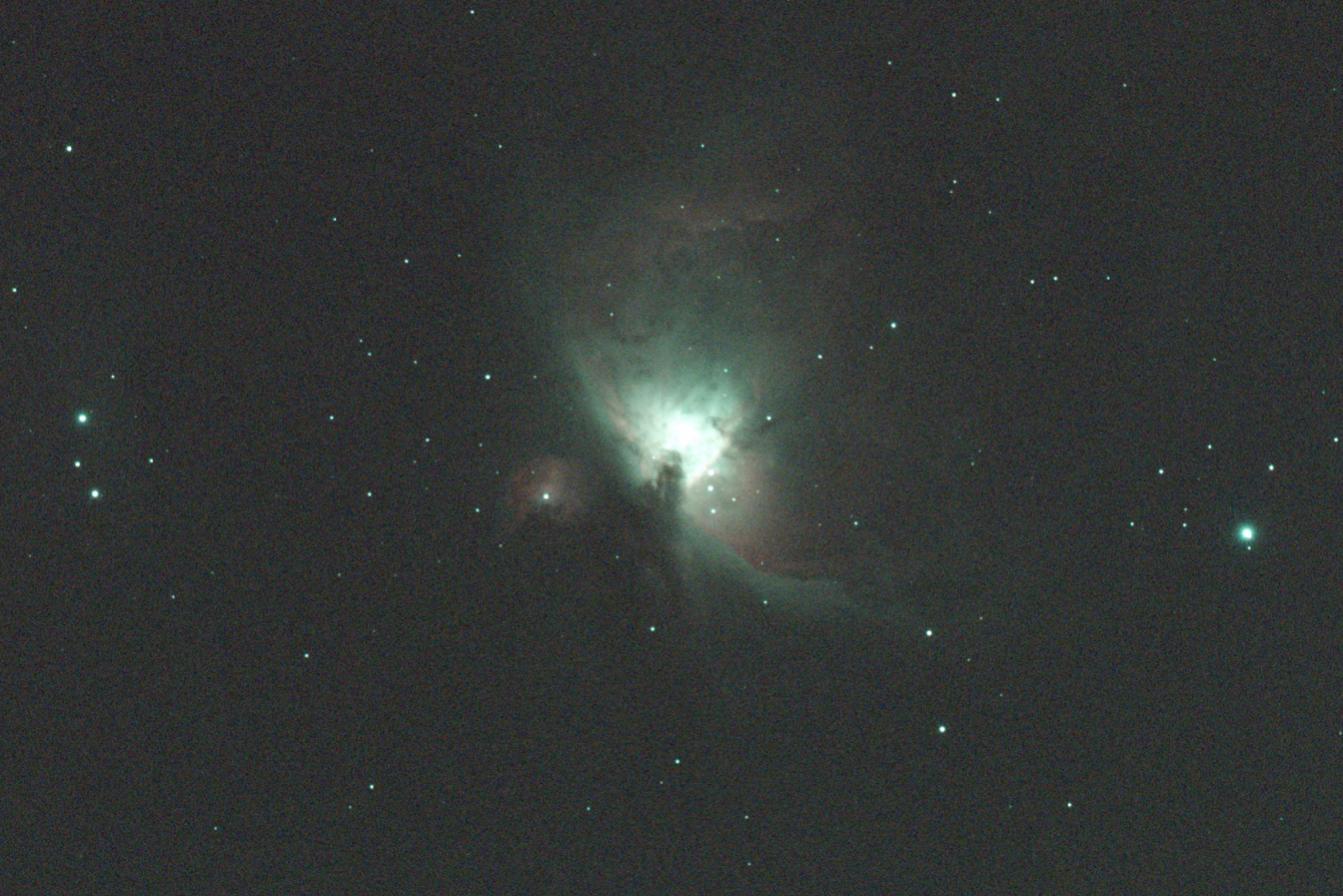
The Orion Nebula - The first object I've photographed
Today, astrophotography remains one of my greatest passions. It connects perfectly with my academic interests in aerospace engineering and astronomy. Understanding the mechanics of telescopes, the physics of light, and the movement of celestial bodies enhances both my hobby and my studies.
I've had the opportunity to photograph various celestial events, from meteor showers to eclipses. Each capture tells a story of our place in the cosmos and reminds me of why I chose to study aerospace engineering.
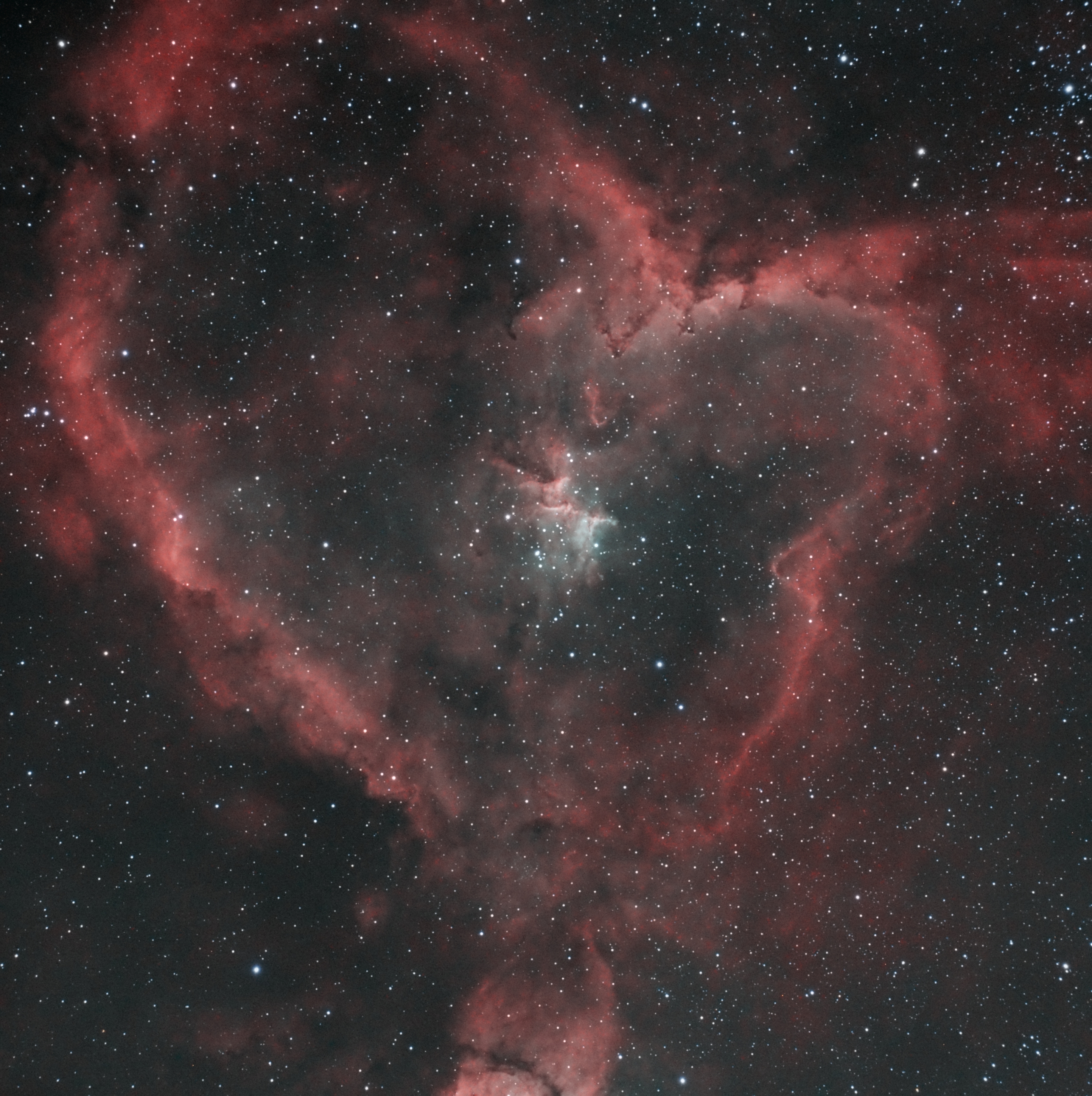
A recent capture of the Heart Nebula
Watch this detailed walkthrough of my deep-sky astrophotography process, from initial setup and equipment configuration to the final image processing workflow. This video covers the technical aspects of capturing faint nebulae and galaxies, including tracking, focusing, and the art of combining multiple exposures.
This comprehensive guide demonstrates the patience and precision required for deep-sky imaging, showing how multiple hours of data collection and careful post-processing can reveal the hidden beauty of distant cosmic objects.